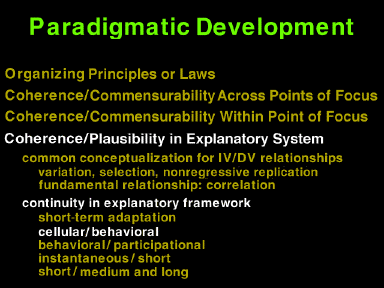 Slide 5-32
Slide 5-32

 Slide 5-32
Slide 5-32
The first continuity to illustrate is between cellular adaptation and behavioral adaptation. Note that the present discussion is artificially limited to only one time scale.
 Slide 5-33
Slide 5-33
We want to see if there is continuity in the paradigm by seeing if: 1) correlation can be used as an organizational descriptor for the functional relationships at the level of molarity below behavioral adaptation (i.e., its machinery); 2) those functional relationships result in behavioral adaptation if they are aggregated at an organismic level rather than at a cellular level; and 3) behavioral adaptation provides a context for cellular adaptation .
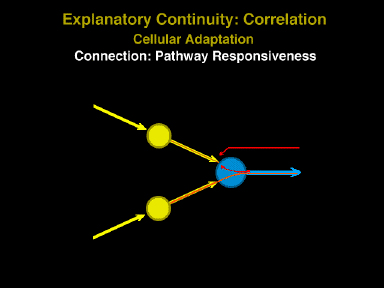 Slide 5-34
Slide 5-34
The role of the nervous system in controlling behavior is well established. The important issue for our present purpose is whether correlation is the appropriate description for the reductionistic machinery underlying learning. We need some actual biological process at the neural level which would allow us to argue that correlation is the explanation for the way living neural systems function. Neural network theory has effectively made this very case. The critical element of a neural network model is some form of feedback. When a neuron fires it causes an alteration in the future effectiveness of recently active synapses which had been active concurrently but were subthreshold. A simple example would be that the firing of an unconditioned stimulus neuron (lower yellow neural path) would cause any synapse which originated from a stimulus (CS, illustrated with the upper yellow neural path) which occured at the same time or before the occurrence of the unconditioned stimulus to be more likely to fire that unconditioned response neuron (blue neural path) in the future. The take home message is simply that there is in fact sufficient evidence to believe that correlation drives learning.
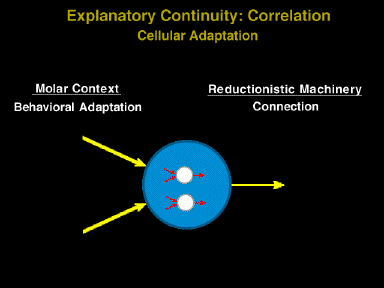 Slide 5-35
Slide 5-35
This slide illustrates that behavior can be seen as the context for neural activity or that neural activity can be seen as the reductionistic machinery underlying behavioral adapation.
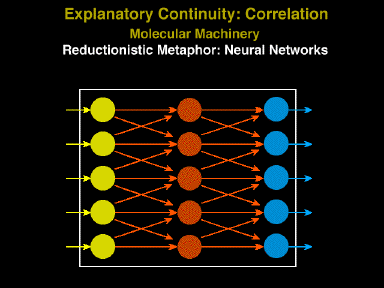 Slide 5-36
Slide 5-36
Neural networks are computational algorithms which simulate neurons in layers, with adjustable strengths interconnection. They are typically constrained to have primitive functionality not to exceed that exhibited by actual neurons.
How these connections come to control an organism is, in actuality, unnecessary to the study of behavioral adaptation. But, they are important if knowledge of the reductionistic process is desired.
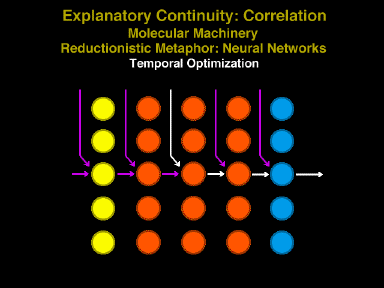 Slide 5-37
Slide 5-37
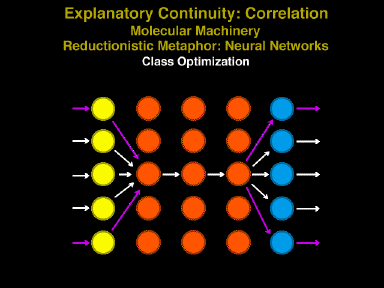 Slide 5-38
Slide 5-38
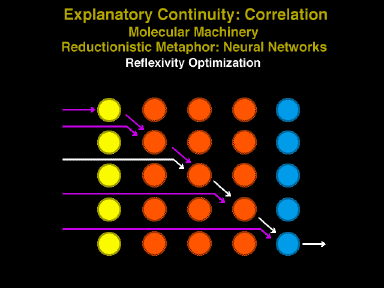 Slide 5-39
Slide 5-39
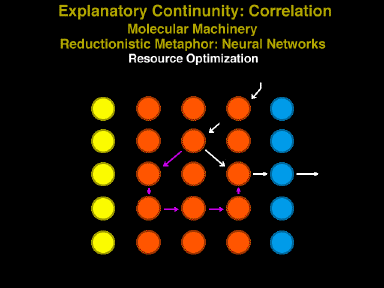 Slide 5-40
Slide 5-40
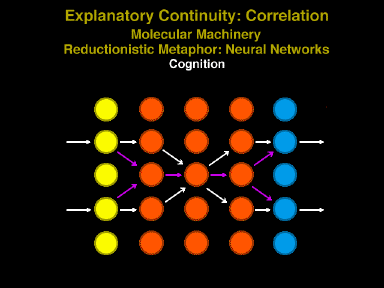 Slide 5-41
Slide 5-41